Two neighbors sign contracts on the same spring morning. One has visions of cannonballs and cousins orbiting a grill; the other dreams of silent laps at dusk and a hot soak before bed. Same lot size, same budget, very different pools. That contrast is the secret to hiring well: the right contractor isn’t just a dig crew. They’re a translator who can turn the life you want outdoors into drawings, inspections, and a sequence of trades that produce a place you’ll use every week, not just on unveiling day. Choosing them starts with choosing your pool—not by brand or price, but by the moments you want to have in the water.
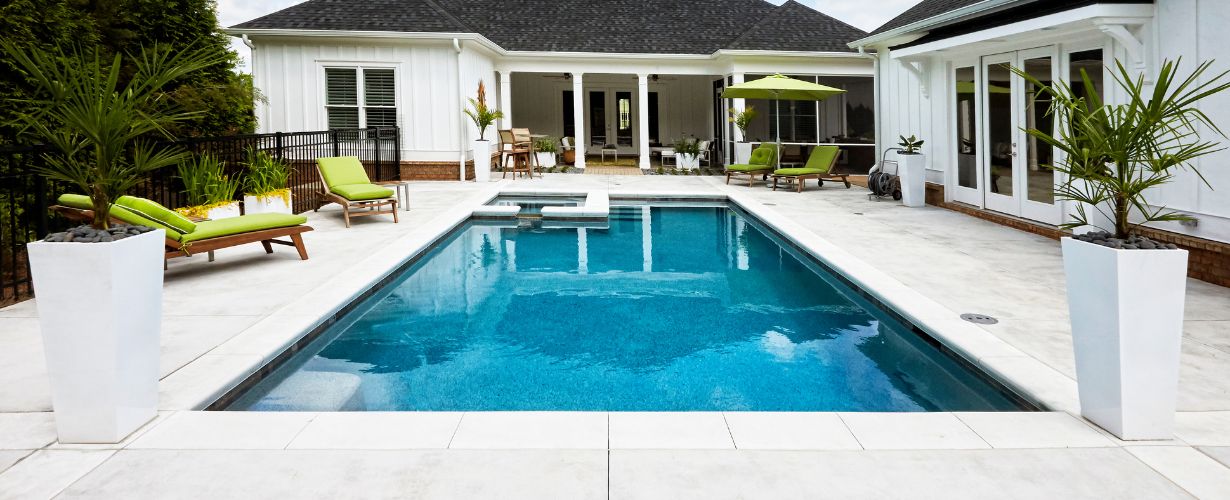
This article focuses on in‑ground concrete pools—gunite or shotcrete shells that are built on site. Concrete earns its keep by letting the design follow the way you live. Because the shell is formed and reinforced at your home, shapes and features can be tuned instead of forced. You want a twelve‑inch‑deep tanning shelf where toddlers can splash and adults can read? Put it on the sunniest edge and add umbrella sleeves so shade goes where chairs go. Prefer quiet conversation at night? Add benches where sightlines frame the house and landscape, then place steps and a handrail exactly where your body wants to move. With concrete, many decisions aren’t bolt‑ons; they are part of the structure itself. That’s why the outline of a great project begins with lifestyle, not catalogs.
Start by picturing an ordinary Tuesday, not the one‑off party on a mood board. If you’re keeping an eye on small kids while you chat with friends, broad entry steps or a shallow shelf make it effortless to linger without treading water. If you’re a lap swimmer, you’ll value a straight, clear lane and a depth profile that keeps bodies moving rather than bobbing. If your dream is a nightly wind‑down, an attached spa that heats quickly will become the most used “room” you own. These use cases are not mutually exclusive, but they do compete for space, energy, and budget. A pool that wears every hat rarely wears any of them well; a pool that puts your top two moments first earns its keep day after day.
From there, a handful of design calls quietly steer both joy and cost. Entry is one. Traditional steps suit confident swimmers and don’t steal length from a lap lane. A shelf is unbeatable for toddlers, dogs, and in‑water furniture—but it does trade some swim area for lounging. Lighting is another. A few well‑placed, dimmable LED zones turn evening swims into a ritual and make the water safer after sunset. Water features—sheer descents, bubblers, deck jets—add motion and sound; use them intentionally to mask traffic or animate a long, still surface. Then there’s what your feet touch. Decking and coping frame everything you see and feel: brushed concrete for value, pavers or porcelain for pattern and comfort, natural stone for a timeless look. In hotter climates, pay attention to heat underfoot and slip resistance. None of these choices is exotic, yet each one nudges the pool toward the life you pictured at the start.
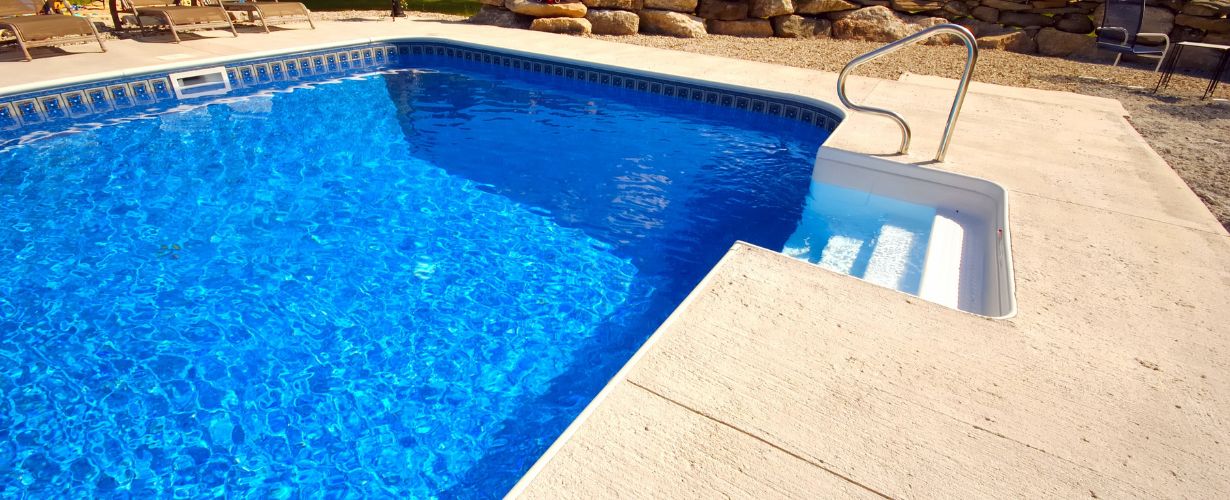
The interior finish deserves a slow look because it changes both the daily experience and the long‑term plan. Plaster is the classic, economical choice with a smooth hand feel, but it asks for attentive water chemistry and, in many climates, a realistic plan to refinish after years of service. Quartz blends add color depth and better stain resistance without a dramatic jump in texture. Pebble finishes broaden the palette further, create a more natural look, and are known for longevity; their lightly dimpled surface feels different underfoot, which some owners love and others prefer to soften with a gentler mix. Full‑tile interiors are exquisite and durable but come with premium cost and craftsmanship demands. The rule of thumb is simple: choose the finish you’ll be happy to see every day, because it’s the one thing you’ll never stop noticing.
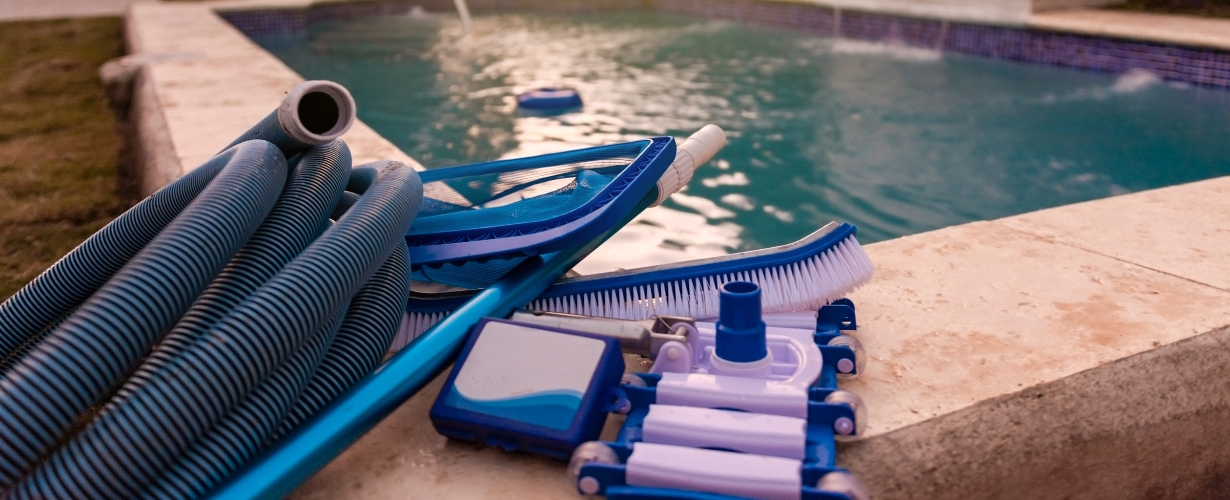
Design, however, is only half the story. The equipment pad is where quiet competence pays for itself month after month. Today’s baseline is a variable‑speed pump. Because it can run at lower speeds for longer periods, it filters more gently, uses less power, and makes far less noise than a single‑speed motor. Filtration should match your maintenance style. Cartridge filters catch fine particles and avoid backwashing; they’re clean and efficient, with periodic cartridge changes. Sand filters are forgiving workhorses and easy to service, though they don’t polish the water as finely. Diatomaceous earth filters can deliver sparkling clarity but ask for more hands‑on care. Sanitization is a preference, not a creed: traditional chlorine is familiar, effective, and simple to dose; salt‑chlorine generators make chlorine from dissolved salt and keep a steadier residual many swimmers find more comfortable. The right answer is the one you’ll actually maintain.
Heating strategy is more personal than it looks on a spec sheet. If happiness means holding the pool in the mid‑80s from spring through fall, an electric heat pump in a warm climate is a steady, efficient friend. If happiness means “let’s sit in the spa tonight,” you want quick, predictable heat to the spa, even if the main pool stays cooler. Many owners choose both: a heat pump to hold a comfortable baseline and a gas heater or dedicated spa heater for evenings and cold snaps. Add a cover or automatic cover if heat retention, safety, or leaf control matters. Covers are not glamour items, but they change the energy math and daily cleanup in ways that most people appreciate by week two.
Permits and safety don’t have to sap your momentum if you frame them correctly. Your builder should own the permit path and keep you informed without burying you in jargon. What you need to know is straightforward. First, water must have somewhere safe to go—during excavation, after storms, and when the filter is cleaned. That means a drainage plan, clean‑outs, and a backwash strategy that won’t erode your neighbor’s yard or stain your driveway. Second, the site must be secured during construction and after completion. Barriers and, in many jurisdictions, alarms are not red tape; they are proven ways to reduce risk. Third, modern suction safety is non‑negotiable: dual main drains or unblockable outlets with rated covers, sized plumbing, and, where required, additional protective devices. You don’t have to memorize acronyms to get this right. You just need to see safety choices on paper before anyone breaks ground.

What about money? Concrete pools live on a spectrum. In many U.S. markets, a simple, well‑designed concrete pool with modest decking starts in the mid‑five figures and climbs as you add size, an attached spa, larger decks, custom features, difficult soil, or tight access that requires cranes and small machinery. Prices rose with labor and materials and rarely fall back to old memories. That’s why priorities matter so much. Spend first on the things you can’t easily change later—structure, hydraulics, and the finish you’ll look at every day. Spend second on the one feature that will change your behavior—often an attached spa or a generous shelf. Then decide which flourishes can wait. Water features and specialty lighting are easier to add down the road than a poorly shaped shell or undersized plumbing.
Timelines are another place where expectation‑setting buys peace of mind. From first sketch to first swim, a custom concrete pool passes through design, engineering, permitting, excavation, steel, plumbing, shotcrete, curing, tile and coping, equipment, decking, interior finish, and startup. Weather, inspection schedules, and material lead times can shuffle the order and the pace. A reasonable plan is to allow about six months door‑to‑door, knowing that some projects wrap faster and some stretch. If you need it “by summer,” begin in winter. If you want it “by winter,” begin in summer. Most frustration comes not from the calendar itself, but from surprises. A builder who schedules subs tightly, communicates delays early, and shows you next‑week’s plan every week is a builder who respects your patience.
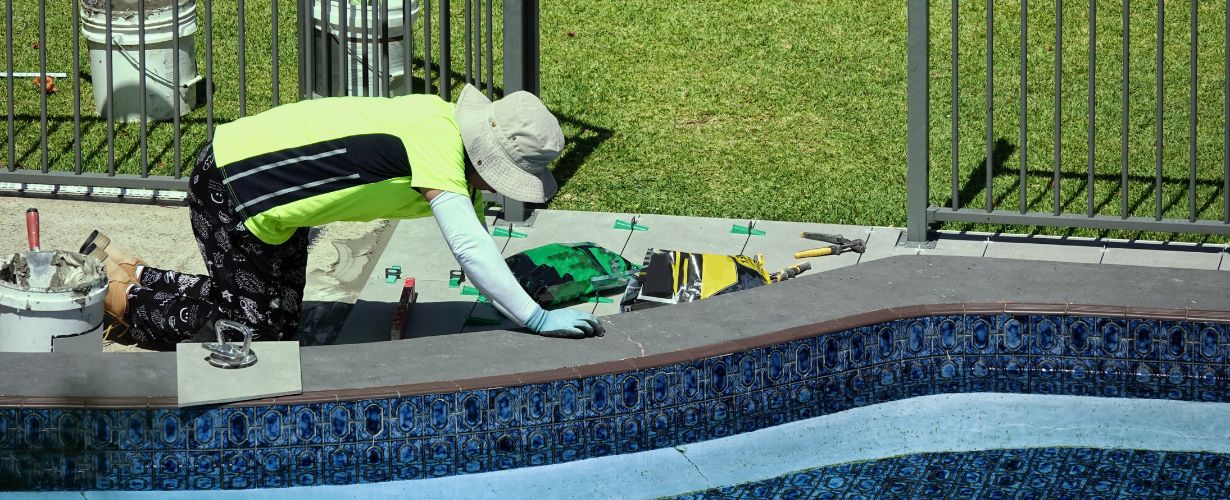
Construction happens in your yard and on your street, so access matters. Excavators, shotcrete rigs, pallets of stone, and bundles of steel all need a way in and a place to sit. Good builders are ruthless about jobsite logistics: they protect driveways, keep staging tidy, and prevent muddy ruts from becoming neighborhood conflicts. Ask how soil will be handled. On some lots it can be spread and shaped; on tight lots it must be trucked off, and those truckloads cost money and time. Ask how daily cleanup will work and where materials will be stored. If you visit a builder’s active site and see neat stacks, swept walks, and clear paths, you’re looking at schedule management made visible.
So how, exactly, do you choose the contractor? Start with the basics—proper licensing where required, general liability insurance, and workers’ compensation. Verify them; don’t just accept assurances. Then ask to see recent, similar projects within a short drive. Visit if you can, both by day and after dark when lighting tells the truth about design. The next filter separates sales talk from buildable reality: drawings. Before a shovel hits soil, you should see a complete packet—site plan, structural details with steel schedule and shell thickness, a hydraulic diagram showing pipe diameters and counts, an equipment‑pad layout, and an electrical/low‑voltage plan. Those pages are your proof that promises survived the trip from conversation to construction.
Money changes hands in phases, and the smartest move is to tie payments to inspected milestones rather than dates on a calendar. A small deposit to begin design and engineering is reasonable; a large deposit before permits are approved is not. Each subsequent draw should map to work you can see—excavation complete, steel tied and inspected, shell in, tile and coping done, equipment set and wired, interior finish complete, startup performed. Along the way, ask for lien releases from subcontractors so you don’t pay twice for the same work. Changing your mind is allowed; letting changes drift into the ether is not. Put adjustments in writing and price them before crews proceed.
Warranties deserve more than a line at the end of a proposal. There are at least three layers: the structure (the shell), the interior finish, and the equipment. Each may carry a different term and a different responsible party. Ask who stands behind each item, who performs service if something goes wrong, and what’s excluded—water‑chemistry neglect and freeze damage are common carve‑outs. Just as important as the warranty sheet is the startup and handoff. A good builder will balance the water, program the automation, walk you through valves and schedules, and leave you with a simple operating guide you actually understand. The first week matters; it sets habits you’ll follow for years.
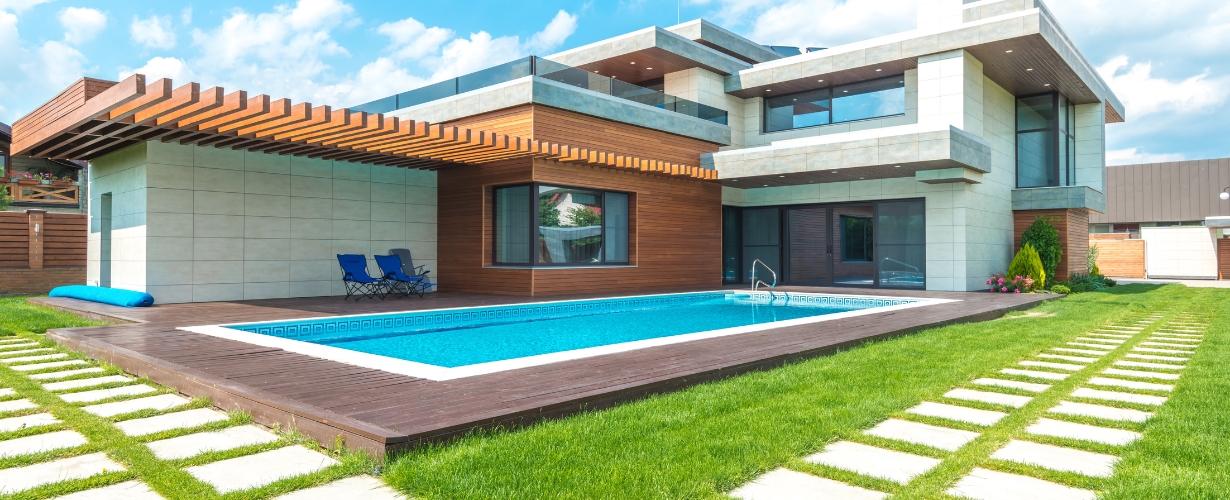
Maintenance is more manageable than legend suggests if the design supports it. Smooth hydraulics, plentiful returns to avoid dead spots, and skimmers placed where the wind actually blows keep surfaces cleaner. Variable‑speed pumps let you run long, quiet filtration cycles that move leaves to baskets without the whine of a single‑speed motor. Robotic cleaners have become unsung heroes of debris pickup; they’re also a safety net when a busy week steals your time. Whether you plan to DIY or hire a service, ask for a weekly rhythm you can live with: brush the walls and steps, skim leaves, empty baskets, test and adjust chemistry, and clean filters when pressure rises. A pool that fits your willingness to tend it is a pool you’ll use more often.
If resale is part of your mental math, remember that buyers react to proportion and finish more than to gadget count. A pool that fits the scale of the yard and lines up with the architecture feels inevitable rather than bolted on. Clean coping lines, thoughtfully placed lights, and an interior finish that wears gracefully will read as quality long after step jets and colored laminars lose their novelty. The other quiet value add is sound. Equipment tucked far from bedrooms and neighbor windows—or shielded thoughtfully—keeps the water part of your life without becoming the soundtrack. Quiet pumps and smart schedules are kindnesses you’ll thank yourself for every night.
Communication is another hinge of success. Great builders turn the messy middle into a series of small, predictable updates: a weekly photo set, a quick text when inspections pass, a heads‑up when trucks will block the curb. They name a daily site lead and they show up when they say they will. When something unexpected appears—soft soil, a buried line, a design tweak to save a tree—they price it transparently and document it as a change order before work continues. That discipline protects both sides: you never wonder what’s happening, and they never gamble on a guess. Ask how they prefer to communicate and how often. The right answer is frequent, brief, and clear.
Finally, a word about budgets and breathing room. Pools multiply choices, and choices become change orders when they’re made late. The antidote is simple: carry a contingency. Five to ten percent protects you from small surprises and lets you say “yes” to the handful of upgrades you’ll appreciate every day—a slightly larger shelf, an extra light where the path bends, a dedicated line for a future heater if you’re not ready yet. The inverse is also true: cut scope with intention rather than trimming the bones. Shorten the deck before you shrink the plumbing. Defer a water feature before you downgrade the finish you’ll look at for years. Protect the things that protect your time in the water.
For all the technical talk, building a pool is ultimately about time—how you’ll spend it and with whom. The clearest path to a pool that earns its place in your week is short and sturdy. Start with a picture of regular life, not a fantasy party. Let that picture choose the shape, the depth, and whether you need a spa. Select equipment you won’t hear and lighting you will use. Respect safety not because inspectors demand it but because people you love live here. Then hire the contractor who can prove—on drawings, on job sites you can visit, and in a sane payment schedule—that they understand the life you’re trying to build.
Which brings us back to those two neighbors. Months later, one backyard bursts with laughter, splash games, and broad steps where everyone perches with a plate. The other is calm and spare: a long, dark lane ends at a spa that glows like an ember at night. Both owners hired well because they began by naming the life they wanted and then demanded drawings and schedules that honored it. Their budgets went to structure, hydraulics, finish, and heat they’d actually use; the flourishes came later or not at all. In different ways, each pool is perfect—not because a contractor sold them a package, but because a builder helped them build the days they wanted to live.